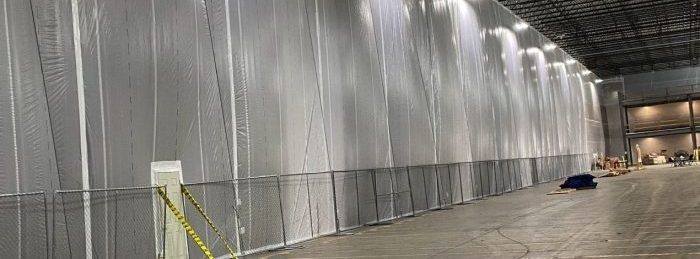Temporary Construction Walls – CLEANWRAP™
CLEANWRAP Temporary Walls for Construction
CLEANWRAP™ Interior Protection’s Temporary Construction Walls are used to separate a construction project that produces dust, debris, and/or odor from the rest of the business operations. While a suspended ceiling would capture falling roofing debris and dust during a re-roofing project, temporary plastic construction walls would further create a dust and debris containment area. Temporary walls for construction have numerous applications, including scarifying and re-flooring projects, concrete cutting, remodeling, installation of new equipment, tenant improvements, restoration, and reparation.
 CLEARNWRAP Custom Construction Walls
CLEARNWRAP Custom Construction Walls
CLEANWRAP™ will design custom-construction walls to shed water, thereby preventing any moisture from penetrating beyond the outermost surface and into the wall itself. Plastic construction walls are essentially moisture-tight constructions. Beneath the wall’s outer skin, the underlying materials and building interior are kept dry. CLEANWRAP™ Interior protection installs various pieces of equipment to act as a temporary wall between the construction area and the cleanroom. The wall blocks dust, debris, and unwanted odors and separates the construction workers and the employees thereby creating a work area that is both safe and free from distractions for the parties involved.


